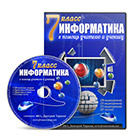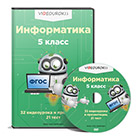

СДЕЛАЙТЕ СВОИ УРОКИ ЕЩЁ ЭФФЕКТИВНЕЕ, А ЖИЗНЬ СВОБОДНЕЕ
Благодаря готовым учебным материалам для работы в классе и дистанционно
Скидки до 50 % на комплекты
только до
Готовые ключевые этапы урока всегда будут у вас под рукой
Организационный момент
Проверка знаний
Объяснение материала
Закрепление изученного
Итоги урока

Была в сети 29.03.2025 21:41

Ivanova Elvira Vitalievna
English teacher
4 года
Местоположение
Russia, Moscow
Специализация
Automatic test equipment or automated test equipment (ATE)
Категория:
Информатика
07.04.2022 14:36

























